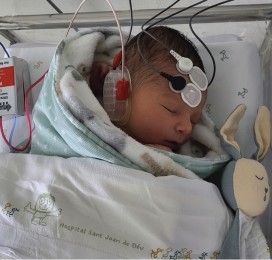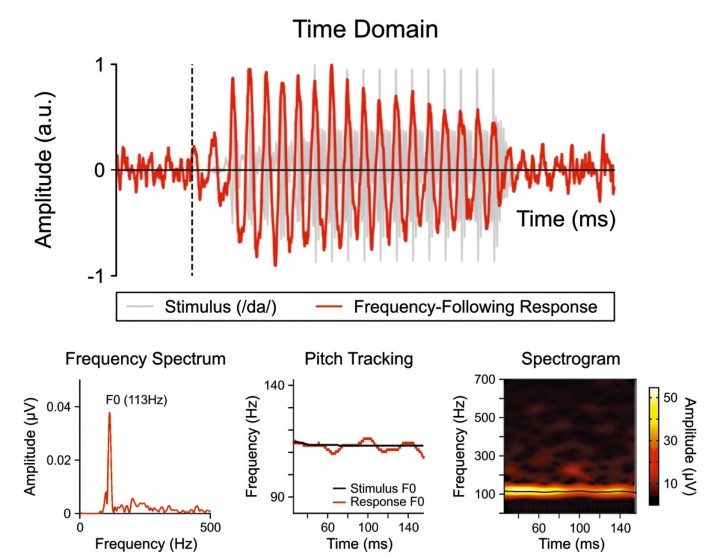The paper entitled Neonatal frequency-following responses: A methodological framework for clinical applications, by, Gorina-Careta, Ribas-Prats, T., Arenillas-Alcón, S., Puertollano, M., Gómez-Roig, M.D., and Escera, has been published in the journal Seminars in Hearing.

In this invited review we present a comprehensive review of the theoretical background, methodological aspects and clinical implications of the frequency-following response (FFR) recorded in newborns. The motivation of this review was our increasing experience with the neonatal FFR. We started our first recordings in February 2017, and the first publication with the suitability of the recordings in clinical neonatal settings and normative data on about 50 newborns came out in 2017 (Ribas-Prats et al., 2019). Subsequently, our research with the neonatal FFR has shown that neural encoding of the speech sounds fundamental frequency (F0) is adult-like at birth (Arenillas-Alcón et al., 2021), whereas the neural encoding of the temporal fine structure shows a striking fast maturation during the first month of age (Ribas-Prats et al., submitted), to continue its maturation during the first year of life (Puertollano et al., in prep.). Furthermore, environmental factors challenging normal fetal development during pregnancy, such as fetal growth restriction (FGR; Ribas-Prats et al., 2022) or being born large for gestational age (LGA; Ribas-Prats et al., submitted), compromise appropriate maturation of the auditory system, resulting in impoverished neural encoding of the sounds of speech, as revealed with the FFR. An intriguing recent finding was that, when classifying neonates as whether they were exposed to music during the third trimester of pregnancy, resulted in enhanced neural encoding of the F0, compared to non-musically exposed babies (Arenillas-Alcón et al., submitted).

The full abstract reads as follows:
The Frequency-Following Response (FFR) to periodic complex sounds is a non-invasive scalp-recorded auditory evoked potential that reflects synchronous phase-locked neural activity to the spectro-temporal components of the acoustic signal along the ascending auditory hierarchy. The FFR has gained recent interest in the fields of audiology and auditory cognitive neuroscience, as it has great potential to answer both basic and applied questions about processes involved in sound encoding, language development and communication. Specifically, it has become a promising tool in neonates, as its study may allow both early identification of future language disorders and the opportunity to leverage brain plasticity during the first two years of life, as well as enable early interventions to prevent and/or ameliorate sound and language encoding disorders. Throughout the present review, we summarize the state of the art of the neonatal FFR and, based on our own extensive experience, present methodological approaches to record it in a clinical environment. Overall, the present review is the first one that comprehensively focuses on the neonatal FFRs applications, thus supporting the feasibility to record the FFR during the first days of life and the predictive potential of the neonatal FFR on detecting short- and long-term language abilities and disruptions.
Reference:
Gorina-Careta, N., Ribas-Prats, T., Arenillas-Alcón, S., Puertollano, M., Gómez-Roig, M.D., Escera, C. (2022). Neonatal frequency-following responses: A methodological framework for clinical applications. Seminars in Hearing, 43, 162-176.
Permanent doi: https://doi.org/10.1055/s-0042-1756162

